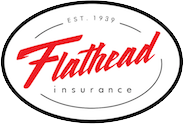Wildfire risk scores are assessments or ratings used to quantify the likelihood and potential severity of wildfires in a particular area. These scores are typically generated based on a variety of factors and data sources, including historical wildfire data, climate conditions, vegetation types, terrain characteristics, and human activities. Here are some key components that contribute to the calculation of wildfire risk scores:
1. Historical Fire Activity: This includes data on past wildfires in the area, such as their frequency, intensity, and extent. Areas with a history of wildfires are considered to have a higher risk.
2. Weather and Climate Conditions: Weather patterns, including temperature, humidity, wind speed, and precipitation, play a crucial role in wildfire risk assessment. Hot, dry, and windy conditions increase the likelihood of fires and their potential to spread rapidly.
3. Vegetation and Fuel Load: The type, density, and moisture content of vegetation in an area are significant factors. Dry or dead vegetation acts as fuel for fires, making areas with dense, flammable vegetation more susceptible.
4. Topography and Terrain: The shape and features of the landscape can influence the speed and direction of a fire’s spread. Steep slopes, canyons, and valleys may facilitate the rapid movement of flames.
5. Proximity to Urban Areas: Areas located near cities, towns, or residential communities face an increased risk due to the potential for fires to impact homes and infrastructure.
6. Human Activities and Infrastructure: Human factors, such as recreational activities, agricultural practices, and the presence of roads or power lines, can contribute to the likelihood of wildfires. Negligent behavior, like unattended campfires or discarded cigarettes, also increases risk.
7. Firebreaks and Mitigation Efforts: The presence of firebreaks (strategically cleared areas) and other mitigation efforts can reduce the risk and impact of wildfires in a given area.
8. Early Warning Systems and Emergency Preparedness: The availability and effectiveness of early warning systems, evacuation plans, and firefighting resources can influence the overall risk profile of an area.
9. Wildfire Management Practices: The presence of well-maintained fire management practices, such as controlled burns and fuel reduction programs, can mitigate the risk of wildfires.
Wildfire risk scores are used by insurance companies, government agencies, emergency responders, and communities to allocate resources, plan for emergencies, and implement preventive measures. They help stakeholders make informed decisions about land use, construction practices, and wildfire preparedness.
It’s important to note that different organizations and agencies may use their own methods and criteria to calculate wildfire risk scores, and these scores may be specific to certain regions or jurisdictions.

